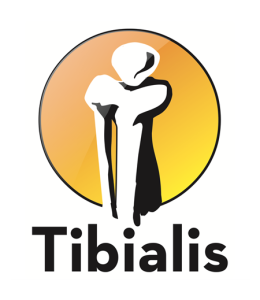Chronic Pain and Blocked Space
Chronic pain is real. If movement helps to reduce the intensity of your chronic pain, the underlying cause might be a muscular restriction blocking space in your body. Accidents, injuries, repetitive motion, and other external forces hitting the body can push muscles into unnatural spaces in the body. That obstruction can change natural movement for many, many years, even after the original injury heals. The good news is that the body inherently knows not to set the concrete like glue that is used to heal muscle tears and surgeries. Excess scar tissue laid down to fix a tear can inadvertently lock neighboring muscles into the wrong place. Those secondary adhesions can be removed with targeted clinical massage thus reversing the tangential damage of relocated muscles often not addressed in the original injury or ignored in non-critical injuries. The secret sauce of using clinical massage to address this type of issue is to know exactly where the muscle is hiding, and then to imagine how it got there which allows the practitioner to track the entry path of the rogue muscle into the space, release the adhesions, and return the muscle back to its originally intended location.
What is the function of space in the body? The blood vessels need space for blood to flow, the lymphatic system needs space for drainage, nerves need space to send signals, and muscles need space to allow oxygen to react with fuel to create kinetic energy to activate muscles and physically move. Kinetic energy also blasts a thermodynamic expansion of space within the body to help maintain a highly efficient, ‘just in time’ delivery system of elements needed to keep moving.
Interstitial space is a fluid filled area outside of cells where elements arriving from multiple systems in the body are staged in preparation for a reaction. The body knows which cells need which elements, and plasma is used as a delivery truck for these transactions. Plasma is permeable allowing product to be contained inside a stable solution, and then released upon arrival to a destination, such as at the end of arterial ends of capillaries.
The pumping of the heart creates hydrostatic pressure that moves plasma cells, which make up over 51% of blood volume, and red blood cells containing oxygen through the arteries to the capillary ends. The interstitial space receives the plasma and oxygen by an osmotic pressure difference between the vascular system and interstitial space, staging the important deliveries to the target cell. The oxygen and fuel are transported in separate vessels in the vascular system to prevent premature reactions prior to their arrival outside the cell wall. Waste such as the byproducts of fat burn, carbon dioxide and water, or leftovers of extra fuel not used by the target cells is reabsorbed into the venous ends of the capillaries or the lymphatic system for recycling or removal from the body.
Another important reaction that takes place in the interstitial space involves the nervous system contribution to cell energy creation. Neurons send neurotransmitter molecules via plasma in the interstitial space to the target postsynaptic cleft to activate a muscle. Plasma is like a gondola carrying fuel, or neurotransmitter molecules, through the intricate waterways of Venice.
The creation of energy in the body can also be described in Ayurvedic Medicine, a 5000 year old discipline from India translated from ancient sanskrit as ‘knowledge of life and longevity’. There are 3 Ayurvedic doshas, or physiological energies circulating in the body: Vata, Pitta and Kapha. In Ayurvedic terminology, the Vata dosha emphasizes the need for space in the body for fluids or rasa to flow properly. Pitta is fire to create energy, and Kapha is the infrastructure defining spaces in which chemical reactions take place to make fire. The goal of an Ayurvedic doctor is balance the three doshas to achieve homeostasis of total body function. For example, Ayurvedic doctrine believes that the lymphatic space supplies nutrition to the nervous system. Panchakarma is an herb based cleansing and rejuvenating program that along with lymphatic drainage massage works to remove toxins from the body increasing the functions of digestion fires and the nervous system reactions. To oversimplify, kapha walls defines vata space in which pitta creates fire. Fire expands space. Repeat.
Ayurvedic Medicine also espouses that the human being is a part of the wave of the universe. The movement of elements in and out of plasma cells in interstitial space is done through a shift in equilibrium of water pressure inside and outside of plasma and other cells. For example, hydrostatic pressure from the pumping of the heart pushes plasma through arteries into a less pressured interstitial fluid outside of cells. Emptied arteries then shift the dynamic pressure of equilibrium to allow absorption of plasma into veins. Muscular contractions pump the venous return to the heart. Equilibrium by itself is stagnation. Homeostasis is a relatively stable equilibrium, a wave that keeps life moving.
Meridians in Chinese medicine are another representation of space in the body. The pathways through which energy flows are defined in meridian lines anchored to an organ. Acupuncture, Tai Chi, Qi Gong, Yoga, and many other modalities are practiced to clear blocked space in the body. Yin and yang are pulling forces of opposite extremes that move energy through the expanse of space surrounding cells throughout the body.
Fascia is a vast matrix of connective tissue that intertwines throughout the body defining space by building walls of collagen to separate functions within the body. Myofascial and Neuromuscular release, and Rolfing ® Structural Integration are excellent modalities that open restrictions in fascia that disrupt the actions that take place in space and reconnect movement patterns in altered lines of fascia.
A key focus presented here is to consider that the relocation of muscles into space in the body can be very disruptive to many layers of efficient body function. A muscular entrapment can impinge nerves or not allow the nerve signal to reach a target cell potentially sending misfired neurotransmitters missing the targeted muscle, activating trigger points. Muscular obstruction in space can also create pain, poor lymphatic drainage, edema, or it can limit function of muscle cells that don’t receive adequate resources.
A large area of space in the body is in the dermis of the skin layer. It is an easily accessible area for a massage practitioner to locate muscles that are obstructing natural body functions. The basic skills used to approach the adhesions are fundamental massage techniques such as cross fiber friction. The real trick is figuring out how muscles ended up in the wrong place, and how to put them back in the right place.
For the person experiencing chronic pain, movement is critical to maintaining homeostasis in the body, especially if movement reduces the intensity of chronic pain. Seek treatment. Do anything you can to open space.

